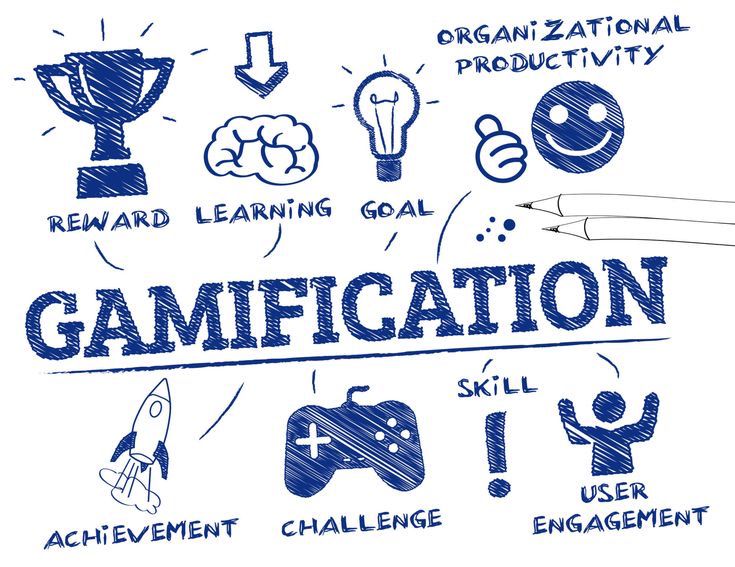
Table of Contents:
INTRODUCTION
First and foremost, teaching a second language involves a variety of approaches, plans, exercises, and time to allow students to learn in accordance with their needs, abilities, and interests. Speaking is one of the abilities that students must develop when studying English, according to Shohib (2012). It is a vital component of communication that students must get better at. Nevertheless, as noted by Wright (2011), engaging in innovative activities helps children learn more effectively in addition to grabbing their attention. This suggests that in order to encourage them and assist them as they nurture their abilities to speak, learners have the opportunity to feel free to engage in conversation in an effortless and pleasurable manner while participating in fun tasks.
According to the Ecuadorian Curriculum in 2016 , the grammatical aspect of the language is a major emphasis of English language instruction in Ecuador. Students are frequently required to read aloud from textbooks and learn linguistic norms. Students have demonstrated poor speaking proficiency as a result, despite having strong vocabulary and grammatical skills. Concerns have also been raised about students’ communicative capacity since, even after ten years of learning the language, many still do not demonstrate satisfactory levels of competency in communication. Because there are substantial variations between the grammar of their native language and the EFL, most students find it challenging to produce sentences that are grammatically accurate (Manurung, 2015). As well, learners are not given many opportunities to engage in speaking exercises in the classroom or to practice speaking in public (Castañeda, 2019; Essien, 2016).
To assist pupils in overcoming their challenges with speaking English, there are several approaches available. Harmer (2001) contends that in order to motivate children to communicate, teachers must employ a communicative strategy that places more emphasis on language function than on grammar and vocabulary. Stated differently, these exercises will have students talking with one another in a real-world setting when completing their communicative objective is more significant than utilizing precise terminology. However, Harmer (2004) persisted in his assertion that students need to be motivated to communicate in order to engage in these activities.
The discoveries of a review led by Namaziandost, Hashemifardnia, and Shafiee (2019) uncover that the understudies can talk smoothly in the wake of finishing assessment hole, thinking hole, and data hole exercises through task-based learning contrasted with conventional learning. Likewise, Pale skinned person finds that the understudies can expand their talking abilities especially in the part of language after their educator utilizes recast and provoke procedures during the activity (Pale,2017) Also, the focal point of structure helped out through task reiteration works with the understudies to procure their language information from the easy to the complicated structures since they get criticism during the period of learning (Van de Guchte, Braaksma, Rijlaarsdam, and Bimmel, 2016).
LITERATURE REVIEW
Speaking English skills
Speaking is the ability to interact with others using the language and creating an effective communicative situation (Kurum, 2016). There are four speaking sub-skills that speakers have to develop: fluency, vocabulary, grammar, and pronunciation. Speakers must manage speaking skills fluently and clearly to be easily understood by others. According to Escudero and Cutipola (2020), speaking is how to communicate verbally with others using sentence structures and phrases. Speaking is usually symbolized as expressing feelings to others. Through speaking, humans can connect their minds in every aspect of life. That is to make the students more fluent in their communication. Through speaking, humans can connect their minds in every aspect of life. That is to make the students more fluent in their communication.
Importance of Speaking
Speaking is an important skill while learning a second language because oral communication is most used for communicative purposes. Speaking practice is thus more easily integrated into English as a Foreign Language. In addition, speaking is meaningful that students use in their lives. They have more opportunities to interact and communicate in a better way. We must create a communicative purpose for the class to develop speaking skills. Speaking skill aids to student’s interaction where their first impression is based on their ability to speak fluently and understand (Bahadorfar & Omidvar, 2014). Speaking, in the terms of Brown (2001), is a communication process of meaning-making that entails information processing, production, and reception. Providing speaking instruction allows pupils to communicate their thoughts and opinions. It is employed in every circumstance to communicate with others. Students’ speaking skills must therefore be developed if they are to be successful communicators in any background.
Communicative Language Teaching definition
Sjolie et al. (2019) pointed out that CLT is a creative process to build learning, and its development is always related to trial and error. According to the same author, CLT is committed to promoting meaningful and reliable communication. Swanson and Hildebrandt (2017) referred to it as promoting true communication between students being fluent, one of the most important aspects in the classroom.
Communicative Language Teaching in EFL classroom.
Communicative activities are important to stimulate students’ communication with each other in the English class, and these activities should be ranged from easy to more complex based on the level of the students. Moreover, teachers should provide their students with constant scaffolding and feedback for each activity they are involved in (Banciu & Jireghie, 2012). Oradee (2012) asserted that such communicative activities include information gaps, jigsaw activities, problem-solving, and role-playing, all of which can improve students’ speaking skills. In light of the above, the following three paragraphs discuss the main communicative activities which will be used in the current study.
Previous research studies Communicative activities to Improve Speaking skills.
A study carried out in Turkey revealed that the students’ perception of their EFL classes is that teachers overuse course books, and lack fun activities (Arda, & Doyran, 2017). In a different context, Borjian (2015) interviewed 76 public school EFL teachers in Mexico, finding that learners lack interest in learning, believe the language is too complicated; and methods and curricula are overly traditional. Locally, Cirocki, Soto, Encalada & Cuenca (2019) reported a study of the motivational strategies proposed in EFL teaching in Ecuador. It concluded that students felt they should be exposed to more diverse motivational strategies, which can promote autonomous learning, and positive self-evaluation. Hidalgo and Villacís (2020) also suggest that fostering autonomous learning in a safe environment not only motivates students, but also fully develops their potential. This information is important because it points to teaching context sharing similarities that need to be paid attention to. Since learners who lack motivation are less likely to achieve their learning goals (Vibulphol, 2016), it is the teachers’ responsibility to provide students with opportunities to engage in the teaching/learning process.
This study was conducted by (Barriga, Nazuruto, Rivas, et.al; 2022) convenience sampling of thirty 15 – 16 years old A1 level students enrolled in the first year of Baccalaureate of an Ecuadorian Public High School. The researchers decided to choose these students for four reasons. First, they were in a class where there was the recommended number of participants for conducting a study. Second, the thirty students who were involved in the study hold A1 level according to the results of the online placement test from MM Publications. So, they shared similar characteristics regarding the English proficiency level. Third, the high school placed these students within the highest level of English proficiency which was level B according to the class they were in, however, they did not demonstrate any conversational skill development required for this level. Fourth, the students of one of the researchers took part in this study because a positive characteristic about convenience sampling is that participants are available, therefore resources are easy to find.
In a study conducted by Oradee (2012), three communicative activities were used to develop speaking skills: discussion, problem-solving, and role playing. The participants of the study were 49 grade-11 students from Thailand. The study consisted of applying eight lesson plans with three different communicative activities to the participants. The results of this study led to the conclusion that the students’ English speaking abilities, after using the three communicative activities, were significantly improved.
CONCLUSION
To sum up, it can be concluded that the impact that communicative activities have on students’ speaking interaction is positive. As a result, students demonstrated positive reactions, particularly when engaged in activities centered around sentences, which align with their preferences. Through engaging in various speaking exercises, students not only develop linguistic proficiency, but also gain confidence and fluency in expressing themselves in English. Furthermore, students liked these activities as they stood out from the basic explanation–practice procedure that was carried out in class. It can be said that students enjoy doing different activities that are fun at the same time and with that, some of the negative feelings that they previously experienced; decreased. Many studies approved that activities discussed, ranging from group discussions and debates to role-playing exercises and storytelling sessions, provide a holistic approach to language development. Therefore, the use of these activities is highly recommended, as it allows students to feel less afraid of making mistakes and at the same time contributes to making the class more dynamic. In addition to benefiting the students, it also benefits the teachers as it will help to increase one of the skills that can be quite challenging, such as speaking skills. Indeed, it is necessary to continue researching more activities that help improve class participation and at the same time reinforce this skill, as well as its use. By consistently integrating such activities into our teaching practices, I empowered students to communicate effectively in English and equip them with valuable skills for future academic and professional success. Finally, with these activities learners perceive that they practiced their speaking skills more, with these collaborative activities.
References
Albino, G. (2017). Improving Speaking Fluency in a Task-Based Language Teaching Approach: The Case of EFL Learners at PUNIV-Cazenga. SAGE Open, 7(2). https://doi.org/10.1177/2158244017691077.
Arda, S., & Doyran, F. (2017). Analysis of young learners’ and teenagers’ attitudes to English language learning. International Journal of Curriculum and Instruction, 9(2), 179-197.
Bahadorfar, M., & Omidvar, R. (2014). Technology in Teaching Speaking Skill. Acme International Journal of Multidisciplinary Research, 2, 9-13.
Borjian, A. (2015). Learning English in Mexico: Perspectives from Mexican teachers of English. CATE.J SOL Journal, 27(1), 163-173.
Castañeda, D. A. (2019). Improving conversational interactions with task-based activities in Spanish as a second language class. Computer Assisted Language Learning, 0(0), 1–28. https://doi.org/10.1080/09588221.2019.1666149.
Cirocki, A., Soto, S. T., Encalada, M. A. R., & Cuenca, K. V. H. (2019). Motivational Strategies in the Secondary School EFL Classroom: The Case of Ecuador. Electronic Journal of Foreign Language Teaching, 16(2).
Essien, A. M. (2016). Understanding the Hindrances of Esl Students ’ Speaking Skill Development : Implications for Esl Oral Development Activities in Teacher Training Program of Suansunandharajabhat University , Bangkok. (September), 128–133
Eun-Byung, Cho. (2004). Issues Concerning Korean Learners of English: English Education in Korea and Some Common Difficulties of Korean Students. The East Asian Learner, 1(2).
Harmer, J. (2001). The Practice of English Language Teaching (3rd ed.). Edinburgh: Longman.
Hidalgo-Camacho, C., & Escobar, P. (2021). Communication games: Their contribution to developing speaking skills. International Journal of Instruction, 14(4), 643-658. https://doi.org/10.29333/iji.2021.14437a.
Mahmoud, A. A. A., & Tanni, Z. A. (2014). Using Games to Promote Student. Motivation towards Learning English, Al-Quds. Open University Journal for Educational & Psychological Research & Studies, 2(5).
Manurung, K. (2015). Improving the Speaking Skill Using Reading Contextual Internet-based Instructional Materials in an EFL Class in Indonesia. Procedia – Social and Behavioral Sciences, 176, 44–51. https://doi.org/10.1016/j.sbspro.2015.01.442.
Namaziandost, E., Hashemifardnia, A., & Shafiee, S. (2019). The impact of Opinion-gap, Reasoning-gap, and Information-gap tasks on EFL Learners’ Speaking Fluency. Cogent Social Sciences, 5(1), 1–16. https://doi.org/10.1080/23311886.2019.1630150.
Shohib. (2012). How to Teach Speaking Skill. SHOHIBEVERYTHING.BLOGSPOT.COM. http://shohibeverything.blogspot.com/2012/01/how-to-teach-speaking-skill.html
Sjolie, E., Francisco, S., & Langelotz, L. (2019). Communicative learning spaces and learning to become a teacher. Pedagogy, Culture & Society, 27(3), 365-382. https://doi.org/10.1080/14681366.2018.1500392.
Oradee, T. (2012). Developing speaking skills using three communicative activities (discussion, problem-solving, and roleplaying). International Journal of Social Science and Humanity, 2(6), 533-535. http://dx.doi.org/10.7763/IJSSH.2012.V2.164.
Kürüm, E. (2016). Teaching speaking skills. Annals of the University of Oradea: Economic Science, 25(1), 264-273.
Wright, A. (2011). Creativity in Teaching English. Neltachoutari. http://neltachoutari.wordpress.com/2011/02/01/1376/.
Van de Guchte, M., Braaksma, M., Rijlaarsdam, G., & Bimmel, P. (2016). Focus on form through task repetition in TBLT. SAGE, Language Teaching Research, 20(3), 300–320. https://doi.org/10.1177/1362168815609616.
Vibulphol, J. (2016). Students’ Motivation and Learning and Teachers’ Motivational Strategies in English Classrooms in Thailand. English Language Teaching, 9(4), 64–64. https://doi.org/10.5539/elt.v9n4p64.

